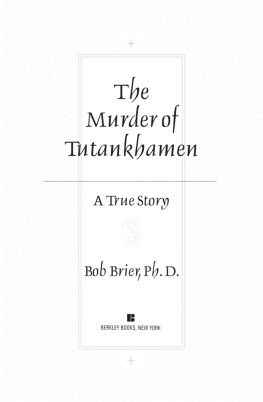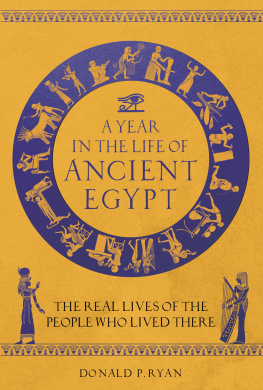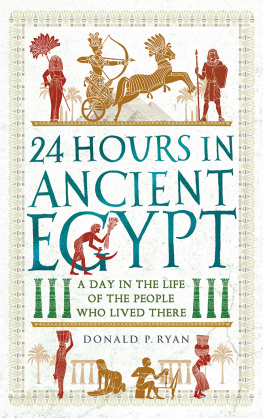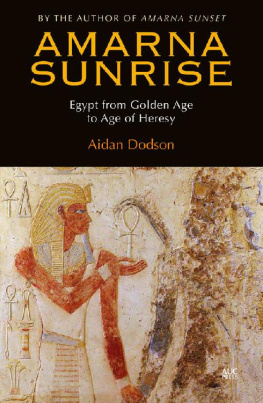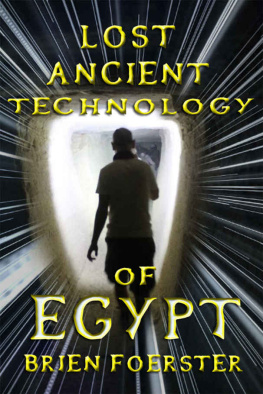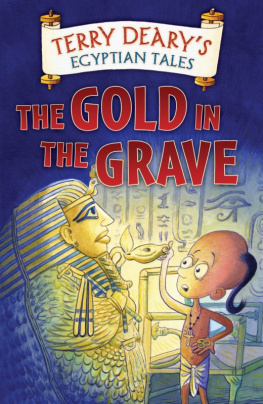van Basten - Ancient Egypt: The Egypt of King Tut
Here you can read online van Basten - Ancient Egypt: The Egypt of King Tut full text of the book (entire story) in english for free. Download pdf and epub, get meaning, cover and reviews about this ebook. year: 2015, genre: Children. Description of the work, (preface) as well as reviews are available. Best literature library LitArk.com created for fans of good reading and offers a wide selection of genres:
Romance novel
Science fiction
Adventure
Detective
Science
History
Home and family
Prose
Art
Politics
Computer
Non-fiction
Religion
Business
Children
Humor
Choose a favorite category and find really read worthwhile books. Enjoy immersion in the world of imagination, feel the emotions of the characters or learn something new for yourself, make an fascinating discovery.

- Book:Ancient Egypt: The Egypt of King Tut
- Author:
- Genre:
- Year:2015
- Rating:4 / 5
- Favourites:Add to favourites
- Your mark:
- 80
- 1
- 2
- 3
- 4
- 5
Ancient Egypt: The Egypt of King Tut: summary, description and annotation
We offer to read an annotation, description, summary or preface (depends on what the author of the book "Ancient Egypt: The Egypt of King Tut" wrote himself). If you haven't found the necessary information about the book — write in the comments, we will try to find it.
Ancient Egypt: The Egypt of King Tut — read online for free the complete book (whole text) full work
Below is the text of the book, divided by pages. System saving the place of the last page read, allows you to conveniently read the book "Ancient Egypt: The Egypt of King Tut" online for free, without having to search again every time where you left off. Put a bookmark, and you can go to the page where you finished reading at any time.
Font size:
Interval:
Bookmark:

2015 All Rights Reserved
Copyright 2015 by T.D van Basten - All rights reserved.
This document is geared towards providing exact and reliable information in regards to the topic and issue covered. The publication is sold with the idea that the publisher is not required to render accounting, officially permitted, or otherwise, qualified services. If advice is necessary, legal or professional, a practiced individual in the profession should be ordered.
- From a Declaration of Principles which was accepted and approved equally by a Committee of the American Bar Association and a Committee of Publishers and Associations.
In no way is it legal to reproduce, duplicate, or transmit any part of this document in either electronic means or in printed format. Recording of this publication is strictly prohibited and any storage of this document is not allowed unless with written permission from the publisher. All rights reserved.
The information provided herein is stated to be truthful and consistent, in that any liability, in terms of inattention or otherwise, by any usage or abuse of any policies, processes, or directions contained within is the solitary and utter responsibility of the recipient reader. Under no circumstances will any legal responsibility or blame be held against the publisher for any reparation, damages, or monetary loss due to the information herein, either directly or indirectly.
Respective authors own all copyrights not held by the publisher.
The information herein is offered for informational purposes solely, and is universal as so. The presentation of the information is without contract or any type of guarantee assurance.
Tutankhamen (ca. 1341BC ca. 1323 BC), the king of Egypts 18 th dynasty, is worldly known by the discovery of his almost intact tomb found by Howard Carter in 1922. Although he was a young king and his tomb was a humble one compared to which corresponds to a king, he was still at the head of guided by advisors such as Ay- the initial recovery of Egypt after the failed revolution of his father, now known according to DNA tests as the Heretic King Akhenaten. Tutankhamen (former Tutankhaten) restored alongside with his wife Ankhesenamun (former Ankhesenpaaten) the old religion in which the cult of Amun was the main religion, they were dedicated to restore and create temples in order to restore the splendor that made the New Kingdom of Egypt famous.
Thanks to the discovery of his tomb by Howard Carter, the boy-king Tut has become one of the best known and popular of all of Egypt's many pharaohs. His was one of the only royal tombs that have been found virtually intact. It is because of this discovery that we learned much about the life of this young king. There were also a number of inconsistencies in the burial that brought almost as many questions as were answered by the discovery.
Upon the opening of this famous tomb, Carter and his team found a huge array of sumptuous grave goods. However, they also found a very small tomb, lacking the well-known royal depictions and wide array of different paintings and inscriptions. Even the grave goods, while luxurious, did not seem fit for a king for his journey to the afterlife.
Much evidence indicates that the tomb was not actually originally intended for the young king. The size of the tomb, the lack of details, and even the sarcophagus itself have led to the theory that this tomb was hastily re-purposed for the boy-king. There is evidence that much of his tomb, including the coffins that he was buried in, had actually been intended for someone else and quickly retooled for use in Tut's burial.
The many mysteries surrounding Tut led to many fantastic rumors, including that of a curse on the tomb of the boy-king. Circumstances and seemingly sudden deaths, fueled by media coverage, helped ignite the rumor that there was a curse on the tomb and that those who worked within it or benefited from the goods within it would suffer a grisly fate. There were just enough bizarre coincidences to fuel the rumors and convince many of the existence of a curse on the tomb of King Tut.
Tut's tomb has continued to inspire and confound us. Recent research indicates that this tomb may not yet be finished providing us with an intimate look of ancient Egypt. Scans and further infrared imagining have indicated the possible presence of additional chambers within the tomb of King Tut. This has led to speculation as to what these rooms might contain. Many ideas abound, including the notion that the famous Queen Nefertiti may lie behind the walls of Tut's tomb.
I:
II:
III:
I


Though he was a young, relatively obscure king, Tutankhamen is probably one of the most widely known of all of Egypt's many pharaohs due to the landmark discovery of his mostly-untouched tomb with its vast amount of finely tooled grave goods and amazing wall reliefs that still capture imaginations to this day. The mysteries of his life and death intrigue us. The discovery provided us with a good many answers, but also a good many questions. Only time will tell if we'll ever know the answers to some of the mysteries surrounding the young boy-king.
The time of King Tut was a tumultuous one. Son of the so-called Heretic King, Akhenaten, Tut's childhood was marked by the dramatic changes that his father brought to the country of Egypt. Major religious reforms caused widespread change and demolition of the traditional power structure of the country. Neglect of foreign relations as well as the delegation of management of the many nomes (regions) of Egypt led to economic chaos. The rule of Akhenaten threw Egypt into social, political, and economic turmoil, and it was in this climate that the young boy-king would take the throne.
The tomb of King Tut was found by Howard Carter in 1922. The find was unprecedented and many claim that Carter's find was perhaps the most important in all of Egyptian archaeological history. It was one of the few tombs that was not altogether destroyed and looted though it had been entered at least a time or two before Carter's discovery. The vast amount of Tut's grave goods, including his sarcophagus and solid gold death mask were all still in situ.
Though the tomb was rich in finds, it led to just as many questions as answers. The tomb was actually quite small for a pharaoh of ancient Egypt. It appeared to have been hastily constructed and thrown together. Some claim that his tomb had actually been built for someone else, perhaps his step-mother Nefertiti. Whatever the case, there are many anomalies associated with the discovery of Tut's tomb that lead many to question the conditions surrounding his burial. Some have even speculated that his coffin and famous death mask may have been re-purposed for the boy-king, that they had initially been intended for someone else and were reworked for use in Tut's burial.
The boy-king Tut had a lot of powerful advisors that helped him make some prudent decisions and changes to a country on the brink of collapse. Ay, who would succeed Tut as pharaoh, helped him re-establish the cult of Amun, as well as move the traditional capital city back to Thebes, rather than the short-lived desert capital city of Amarna that his father built.
Font size:
Interval:
Bookmark:
Similar books «Ancient Egypt: The Egypt of King Tut»
Look at similar books to Ancient Egypt: The Egypt of King Tut. We have selected literature similar in name and meaning in the hope of providing readers with more options to find new, interesting, not yet read works.
Discussion, reviews of the book Ancient Egypt: The Egypt of King Tut and just readers' own opinions. Leave your comments, write what you think about the work, its meaning or the main characters. Specify what exactly you liked and what you didn't like, and why you think so.

